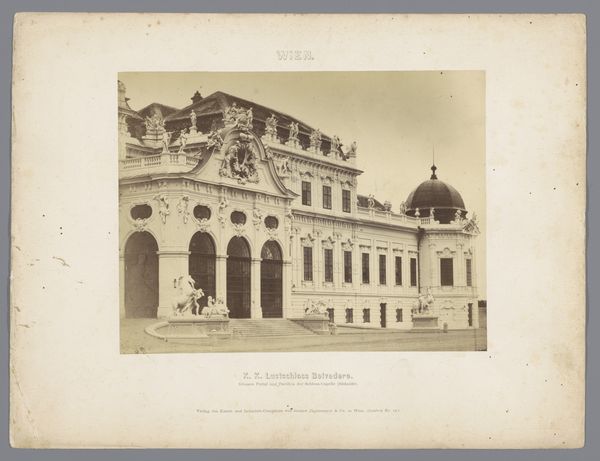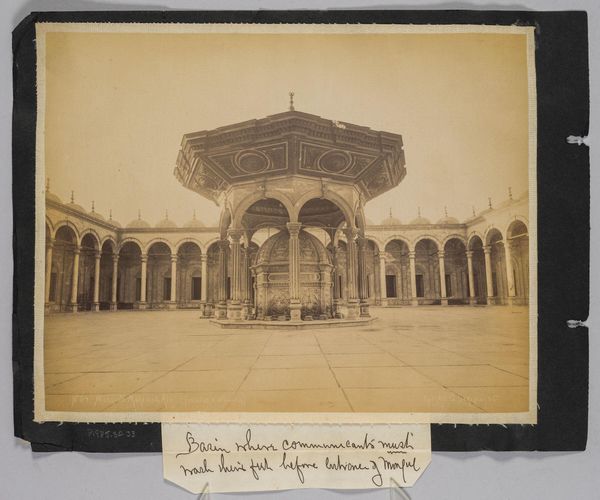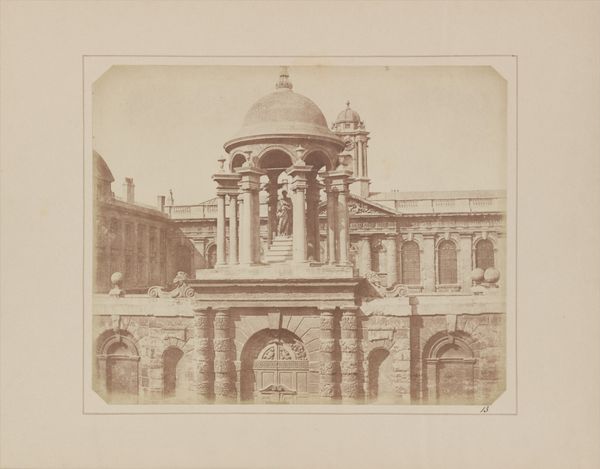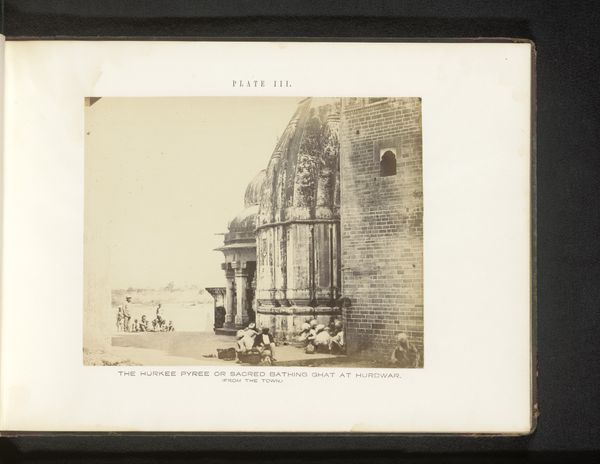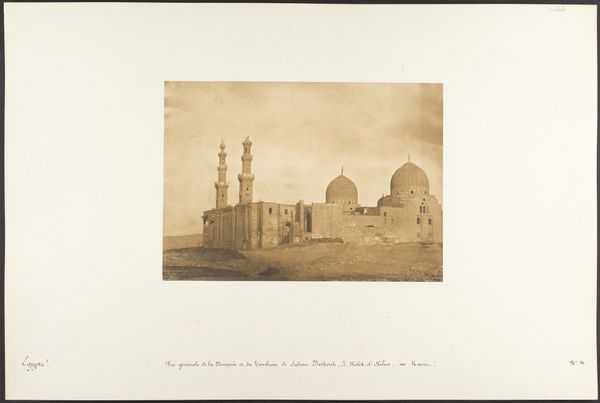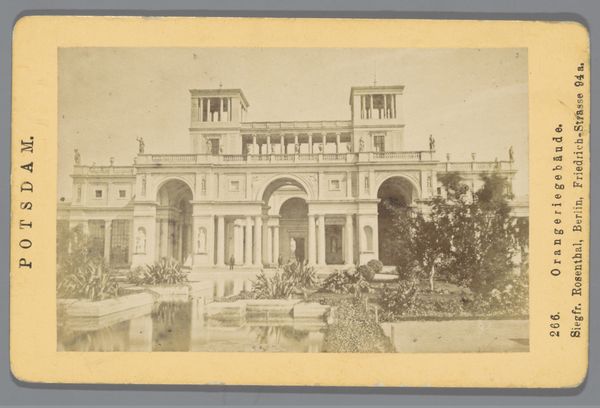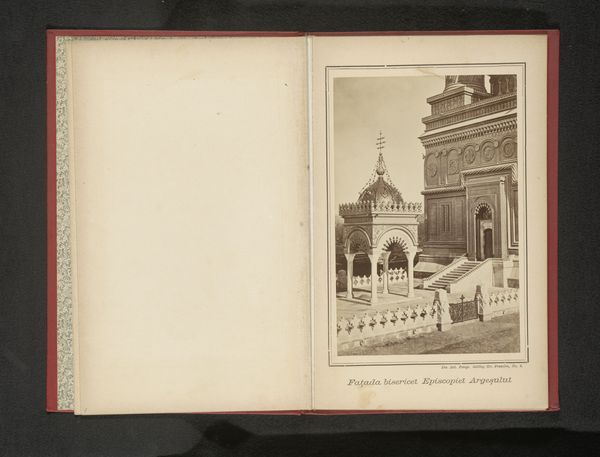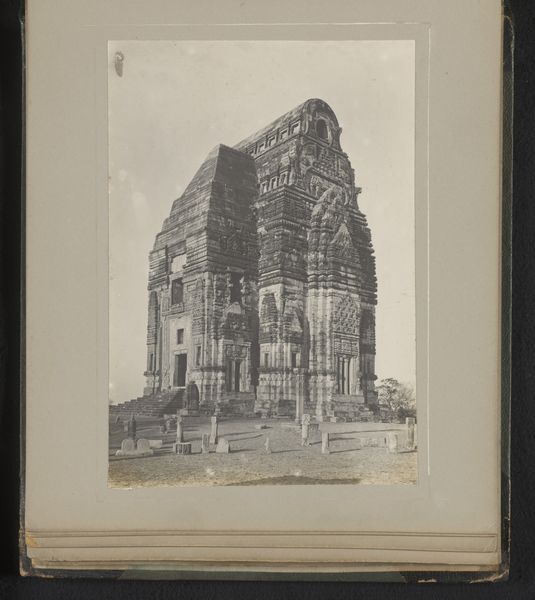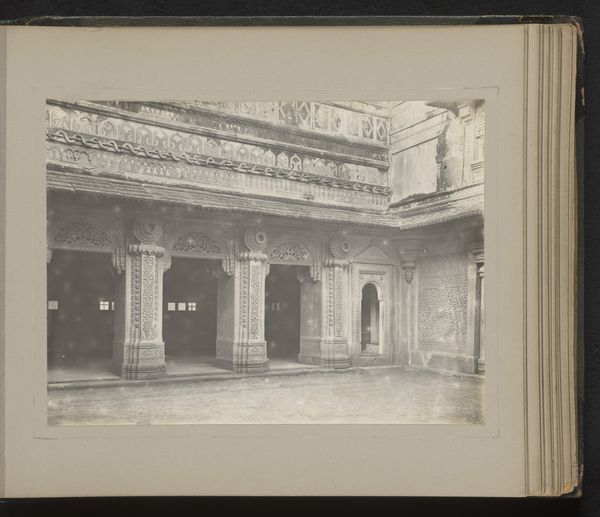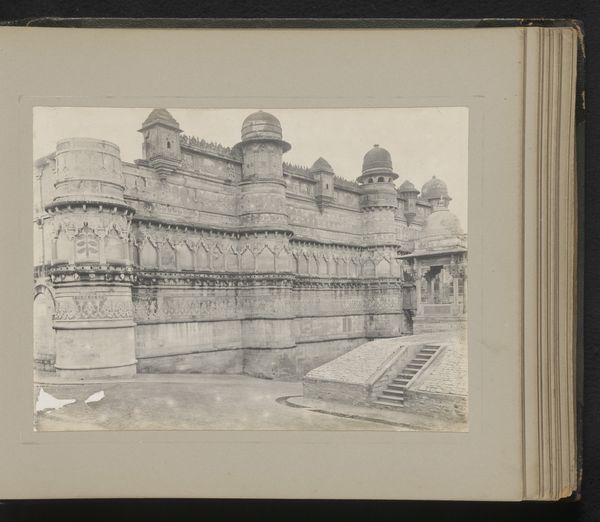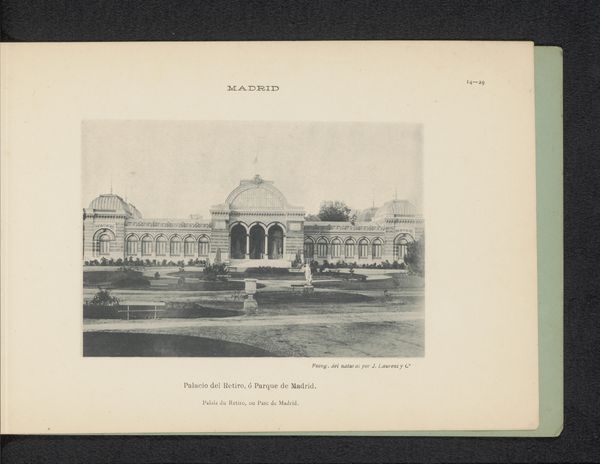![[Humayun's Tomb, Delhi] by Captain R. B. Hill](/_next/image?url=https%3A%2F%2Fd2w8kbdekdi1gv.cloudfront.net%2FeyJidWNrZXQiOiAiYXJ0ZXJhLWltYWdlcy1idWNrZXQiLCAia2V5IjogImFydHdvcmtzLzQ5YWQ5NzNiLTViNDgtNDJlZS1hZWQwLTBmODhlZTQwNWY2ZC80OWFkOTczYi01YjQ4LTQyZWUtYWVkMC0wZjg4ZWU0MDVmNmRfZnVsbC5qcGciLCAiZWRpdHMiOiB7InJlc2l6ZSI6IHsid2lkdGgiOiAxOTIwLCAiaGVpZ2h0IjogMTkyMCwgImZpdCI6ICJpbnNpZGUifX19&w=3840&q=75)
photography, architecture
#
landscape
#
photography
#
ancient-mediterranean
#
islamic-art
#
architecture
Dimensions: Image: 13.9 x 21.8 cm (5 1/2 x 8 9/16 in.) Mount: 20.9 x 28 cm (8 1/4 x 11 in.)
Copyright: Public Domain
Editor: Here we have an 1850s photograph of Humayun's Tomb in Delhi, credited to Captain R.B. Hill. It's striking how the muted tones give the monument a sense of timeless grandeur. What do you see when you look at this image? Curator: I see more than just an architectural marvel frozen in time. The act of photographing itself, especially in the 1850s, carries a heavy cultural weight. British colonial officers were documenting India, categorizing and, in a way, claiming ownership through the lens. Editor: That's a perspective I hadn’t considered. So, the image becomes more about power dynamics than purely appreciating the architecture? Curator: Exactly. The photograph circulates back home, shaping British perceptions of India as ancient, majestic, but ultimately under their domain. Notice how the photograph flattens the image; it’s not the dynamic, vibrant India. Instead, it’s a carefully curated, digestible image, stripped of its chaotic reality. It’s a representation made for Western consumption, divorced from the socio-political context of its time. Editor: So, even a seemingly straightforward photograph is loaded with social implications! Was photography used as a political tool often during this period? Curator: Quite often. Think of how photography could reinforce racial and social hierarchies back in Britain. Photography presented the captured object, person or space, as "evidence" of its inferiority, difference, or “otherness”. Editor: It’s fascinating how much context can be embedded in a single image. It definitely changes how I view these historical photographs now. Curator: Indeed. It reminds us to look beyond the surface beauty and consider the underlying narratives and power structures at play.
Comments
No comments
Be the first to comment and join the conversation on the ultimate creative platform.
